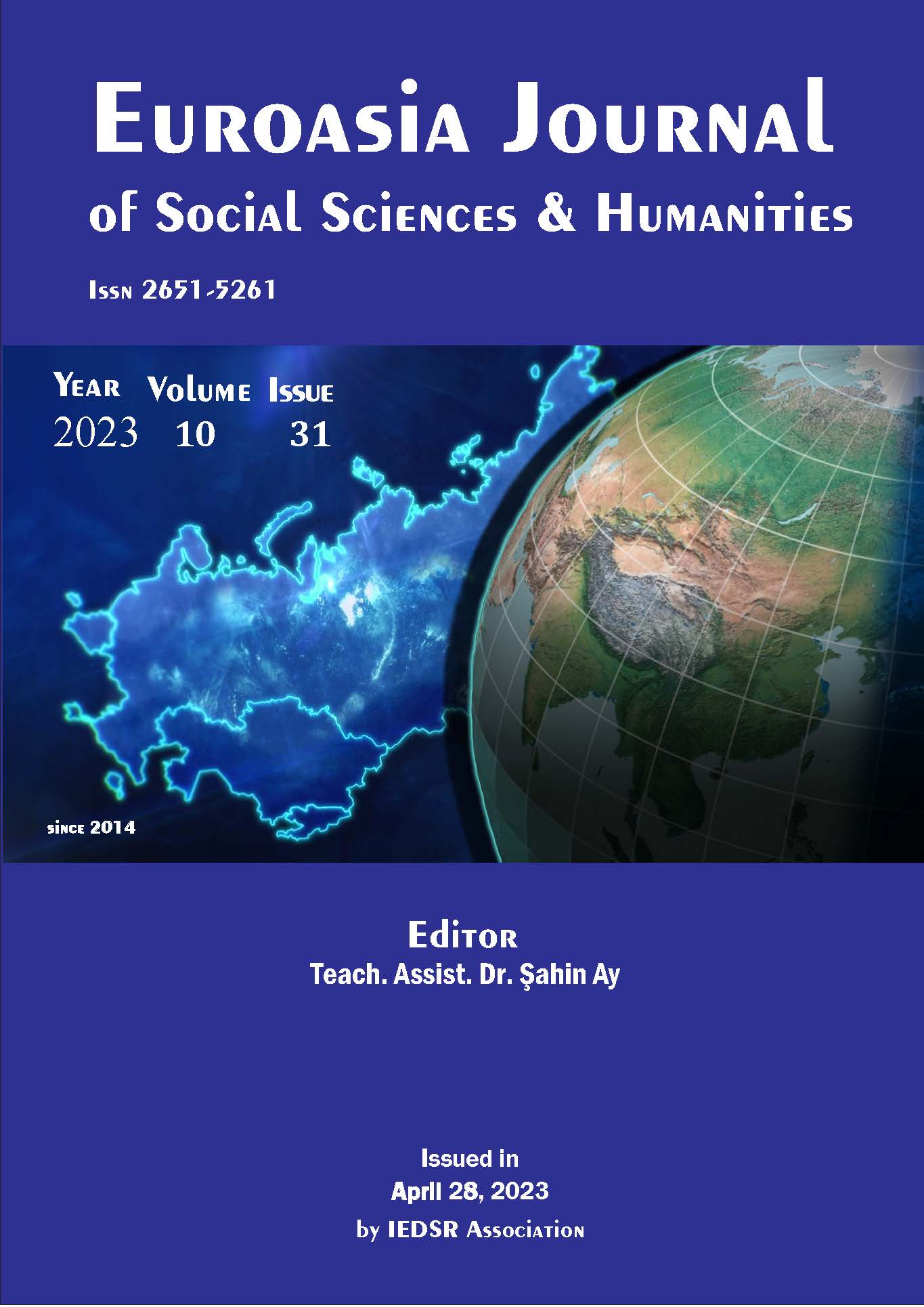Depresyon Hastalarında İntihar Riski İle Başa Çıkma Stratejileri Arasındaki İlişki
DOI:
https://doi.org/10.5281/zenodo.7942176Anahtar Kelimeler:
İntihar, Depresyon, Başa Çıkma StratejileriÖzet
Bu çalışmanın amacı, depresyon hastalarında intihar riski ve stresle başa çıkma stratejileri arasındaki ilişkiyi belirlemektir.
Bu tanımlayıcı çalışma 102 hastayı içermektedir. Veriler “Beck İntihar Düşüncesi Ölçeği-BSIS” ve “Stresle Başa Çıkma Stratejileri Ölçeği-SCSS” ile toplandı. Bağımsız gruplar için ölçek puan ortalamalarının karşılaştırılmasında betimsel istatistikler ile t-testi ve ANOVA uygulandı. Parametrik olmayan ölçümlerin analizinde Kruskal-Wallis ve Mann Whitney U testleri kullanıldı. Ölçümler arasındaki ilişkiler Pearson Correlation ile test edildi.
BSIS, yaş, eğitim durumu, medeni durum, aile tipi, intihar öyküsü, intihar sayısı, intihar türü ve ailede intihar öyküsü arasında anlamlı fark saptanmıştır. SCSS alt ölçeklerinde; daha önce intihar girişiminde bulunma ve intihardan önce not bırakma ile SCSS alt ölçeklerinde ölçülen umutsuz yaklaşım arasında, iyimser yaklaşım ile önceki girişimlerin varlığı arasında, sosyal destek ve yaş ile medeni durum, aile tipi ve daha önce girişimde bulunma durumu arasında anlamlı fark bulunmuştur. BSIS ile İyimser Yaklaşım arasında negatif korelasyon bulunmuştur.
Depresyon hastalarının risklerinin oldukça yüksek olduğu ve stresle baş edebilmek için duygulara yönelik çok daha pasif stratejiler kullandıkları sonucuna varılmıştır. Başa çıkma becerilerinin geliştirilmesi ve stres düzeyinin düşürülerek etkin duygu düzenlemesinin sağlanması intiharın önlenmesine ve depresyonun yoğunluğunun azaltılmasına yardımcı olacaktır.
İndirmeler
Referanslar
American Psychological Association (APA). (2003). Practice Guidelines Assessment and Treatment of Patients with Suicidal Behaviors. http://psychiatryonline.org Accessed 7 September 2020
Apaydın, H., Özdemir, Ş., & Ünal, A. (2016). İntihar girişiminde bulunan bireylerde bazı değişkenlerle intihar girişimi ilişkisi. Amasya Üniversitesi İlahiyat Fakültesi Dergisi. 7, 46. doi: 10.18498/amauifd.254001
Avcı, D., Sabancıogulları, S., & Yılmaz, F. T. (2016). Investigation of the relationship between suicide probability in inpatients and their psychological symptoms and coping strategies. Neurosciences (Riyadh, Saudi Arabia). 21(4), 345-351. doi:10.17712/nsj.2016.4.20150727
Bachmann, S. (2018). Epidemiology of suicide and the psychiatric perspective. International Journal of Environmental Research and Public Health. 15, 1425. doi: 10.3390/ijerph15071425
Beck A. T., Kovacs, M., & Weissman, A. (1979). Assessment of suicidal intention: The Scale for Suicide Ideation. J Consult Clin Psychol. 47, 343-352.
Beghi, M., & Rosenbaum, J. F. (2010). Risk factors for fatal and nonfatal repetition of suicide attempt: a critical appraisal. Current opinion in psychiatry. 23(4), 349-355.
Biggs, A., Brough, P., & Drummond, S. (2017). Lazarus and Folkman's Psychological Stress and Coping Theory. In book: The Handbook of Stress and Health: A Guide to Research and Practice. 351-364. doi: 10.1002/9781118993811.ch21.
Ercan, S., Aksoy, M., Yalçın, A., & et al. (2016). Ankara’da acil servislere başvuran intihar girişim olgularının sosyodemografik ve klinik özellikleri, Bilişsel Davranışçı Psikoterapi ve Araştırmalar Dergisi. 1, 5-12.
Hafferty, J. D., Navrady, L. B., Adams, M. J. & et al. (2019). The role of neuroticism in self-harm and suicidal ideation: results from two UK population-based cohorts. Social Psychiatry and Psychiatric Epidemiology. 54(12), 1505-1518. doi: 10.1007/s00127-019-01725-7.
Hawton, K., Casañas, I., Comabella, C., Haw, C., & Saunders, K. (2013). Risk factors for suicide in individuals with depression: A systematic review. Journal of Affective Disorders. 147, 17-28. doi: 10.1016/j.jad.2013.01.004.
Karataş, Z., & Çelikkaleli, Ö. (2018). Beliren yetişkinlikte intihar olasılığı: stresle başetme, öfke ve cinsiyet açısından bir inceleme. Mersin Üniversitesi Eğitim Fakültesi Dergisi. 14(1), 450-462.
Keliat, B. A., Tololiu, T. A., Daulima, N. H. C., & Erawati, E. (2015). The influence of the training of coping skills for stress on self-control and intensity of depression among adolescents with suicide risk. International Journal of Advanced Nursing Studies. 4(2), 110.
Kim, S., Choi, K. H., Lee, K.S. & et al. (2020). Risk Factors for Serious Suicide Attempts with High Medical Severity. Suicide and Life-Threatening Behavior. 50(2), 408-421. doi: 10.1111/sltb.12597.
Knafo, A., Guilé, J. M., Breton, J. J. & et al. (2015). Coping strategies associated with suicidal behaviour in adolescent inpatients with borderline personality disorder. Canadian Journal of Psychiatry. Revue Canadienne de Psychiatrie. 60(2 Suppl 1), S46.
Konkan, R., Erkus, G. H., Guclu, O., & et al. (2014). Coping strategies in patients who had suicide attempts. Archives of Neuropsychiatry. 51, 46-51.
Öncü, B. (2017). İntihar davranıșı: epidemiyoloji ve risk etmenleri. Psikiyatride Güncel. Türkiye Psikiyatri Derneği Sürekli Eğitim/Sürekli Mesleki Gelişim Dergisi. 7(1), 1-13.
Özcelik, H.S., Özdel, K., Bulut, S.D., & Örsel, S. (2016). The reliability and validity of the Turkish version of the Beck Scale for Suicide Ideation (Turkish BSSI). Klinik Psikofarmakoloji Bülteni-Bulletin of Clinical Psychopharmacology. 25(2), 141-150. doi: 10.5455/bcp.20141214105009
Öztürk, M. H., Yüksel, N., & Utku, Ç. (2018). Şizofreni hastalarında intihar girişiminin bilişsel işlevler, umutsuzluk ve iç görü ile ilişkisi. Anadolu Psikiyatri Dergisi. 19(3), 256-263.
Parekh, R. (2019). American Psychological Association. Suicide Prevention. https://www.psychiatry.org/patients-families/suicide-prevention. Accessed 8 June 2019.
Şahin, N. H.,& Durak, A. (1995). Üniversite öğrencileri için bir stresle başa çıkma tarzı ölçeği. Türk Psikoloji Dergisi. 10(34), 56-73.
Shao, R., He, P., Ling, B. & et al. (2020). Prevalence of depression and anxiety and correlations between depression, anxiety, family functioning, social support and coping styles among Chinese medical students. BMC Psychology. 8(38), 1-19.
Stallman, H. M. (2018). Coping planning: a patient-centred and strengths-focused approach to suicide prevention training. Australasian Psychiatry. 26(2), 141-144. doi: 10.1177/1039856217732471.
Tarsuslu, B., & Durat, G. (2018). Erkeklerde depresyon, intihar, yardım arama ve iyi oluş. Journal of Human Rhythm. 4(2), 80-87.
Türkiye İstatistik Kurumu. (2016). İntihar İstatistikleri. TÜİK Haber Bülteni. Sayı: 215216. http://www.tuik.gov.tr/PreHaberBultenleri.do?id=21516. Accessed 7 September 2020
World Health Organization (WHO). (2014). Preventing suicide a global imperative. Luxembourg: WHO Library Catalog.
World Health Organization (WHO). (2020). Suicide. https://www.who.int/news-room/fact-sheets/detail/suicide. Accessed 2 September 2020
İndir
Yayınlanmış
Nasıl Atıf Yapılır
Sayı
Bölüm
Lisans
Telif Hakkı (c) 2023 EUROASIA JOURNAL OF SOCIAL SCIENCES & HUMANITIES

Bu çalışma Creative Commons Attribution-NonCommercial 4.0 International License ile lisanslanmıştır.

